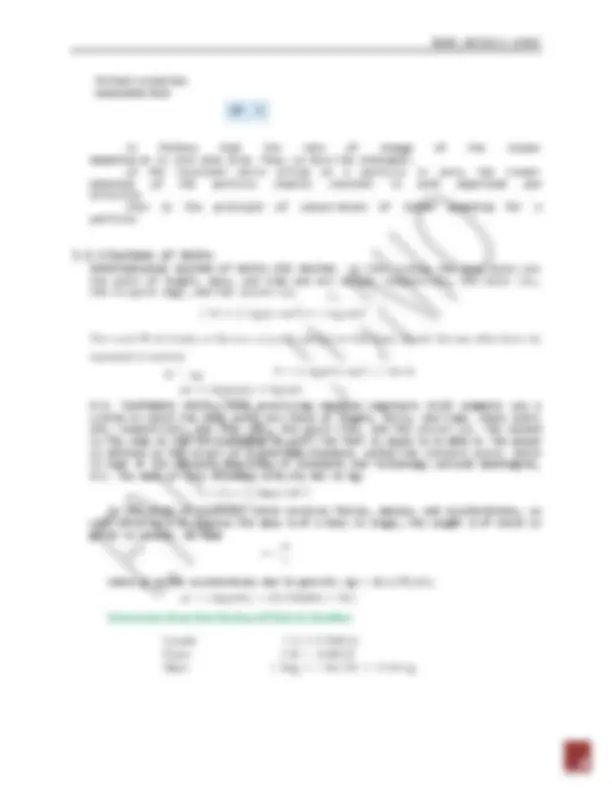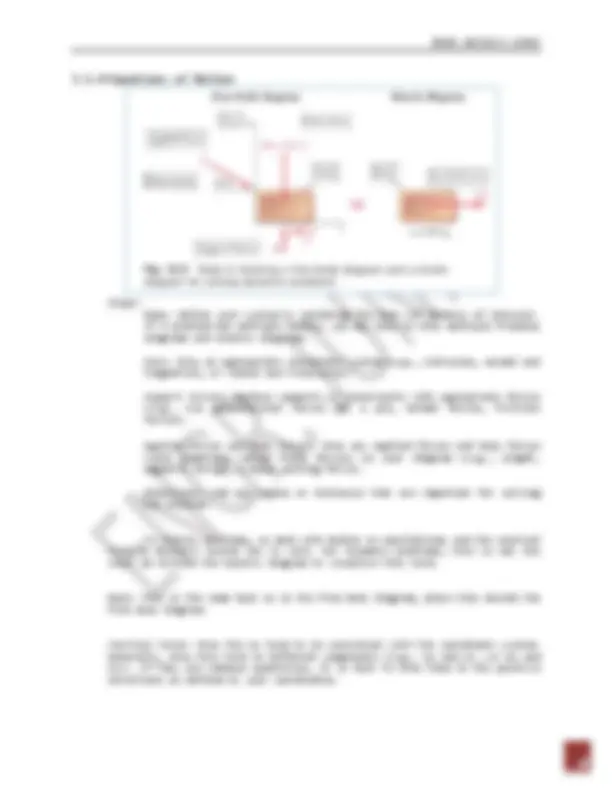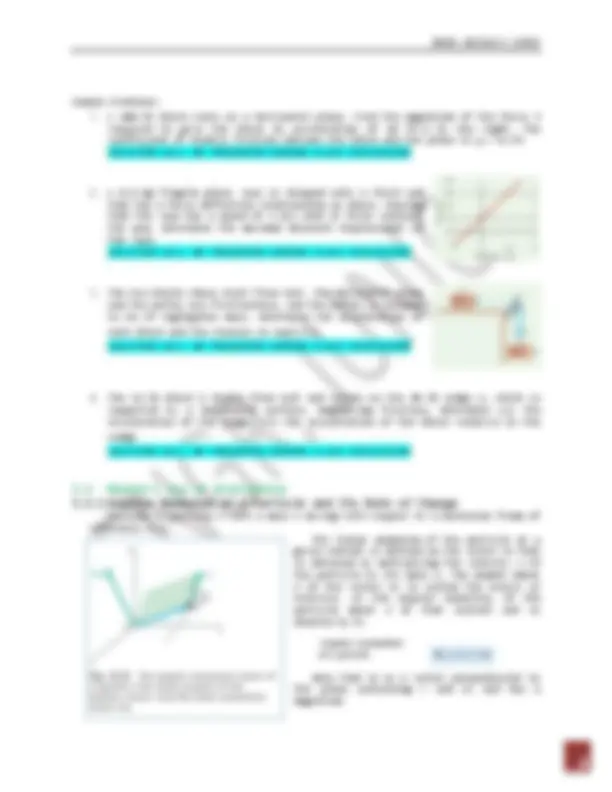






Study with the several resources on Docsity

Earn points by helping other students or get them with a premium plan


Prepare for your exams
Study with the several resources on Docsity

Earn points to download
Earn points by helping other students or get them with a premium plan
Community
Ask the community for help and clear up your study doubts
Discover the best universities in your country according to Docsity users
Free resources
Download our free guides on studying techniques, anxiety management strategies, and thesis advice from Docsity tutors
An overview of newton's second law of motion and its application in particle kinetics. It explains the relationships between mass, force, and acceleration, and how to apply newton's second law to solve particle kinetics problems using different coordinate systems. The document also covers the analysis of central force motion problems using principles of angular momentum and newton's law of gravitation. The content includes objectives, explanations of key concepts, sample problems, and discussions on systems of units and equations of motion. This comprehensive coverage of particle kinetics and related topics could be useful for university students studying engineering, physics, or related disciplines.
Typology: Study notes
1 / 8

This page cannot be seen from the preview
Don't miss anything!





KINETICS OF PARTICLES: NEWTON’S SECOND LAW OF MOTION
3.1 Newton’s Second Law and Linear Momentum In statics, we used Newton’s first and third laws of motion extensively to study bodies at rest and the forces acting upon them. We also use these two laws in dynamics; in fact, they are sufficient for analyzing the motion of bodies that have no acceleration. However, when a body is accelerated–– that is, when the magnitude or the direction of its velocity changes––it is necessary to use Newton’s second law of motion to relate the motion of the body to the forces acting on it. First law : If no net force acts on a particle, then it is possible to select a set of reference frames, called inertial reference frames, observed from which the particle moves without any change in velocity. Second law : Observed from an inertial reference frame, the net force on a particle is proportional to the time rate of change of its linear momentum: F = d [ mv ] / dt. Momentum is the product of mass and velocity. This law is often stated as F = ma (the net force on an object is equal to the mass of the object multiplied by its acceleration) Third law : Whenever a particle A exerts a force on another particle B , B simultaneously exerts a force on A with the same magnitude in the opposite direction. The strong form of the law further postulates that these two forces act along the same line. 3.1.1 Newton’s Second Law of Motion We can state Newton’s second law as follows: If the resultant force acting on a particle is not zero, the particle has an acceleration proportional to the magnitude of the resultant and in the direction of this resultant force.
The constant value obtained for the ratio of the magnitudes of the forces and accelerations is a characteristic of the particle under consideration; it is called the mass of the particle and is denoted by m. When a particle of mass m is acted upon by a force F , the force F and the acceleration a of the particle must therefore satisfy the relation When a particle is subjected simultaneously to several forces, the equation should be replaced by where ∑ F represents the sum or resultant of all the forces acting on the particle. 3.1.2 Linear Momentum of a Particle and its Rate of Change Suppose we replace the acceleration a in the equation by the derivative d v / dt. We have Since the mass m of the particle is constant, we can write this as The product m v is called the linear momentum , or simply the momentum , of the particle. It has the same direction as the velocity of the particle, and its magnitude is equal to the product of the mass m and the speed v of the particle (Fig. 12.3). The equation says, The resultant of the forces acting on the particle is equal to the rate of change of the linear momentum of the particle. The second law of motion was originally stated by Newton in this form. Denoting the linear momentum of the particle by L , we have
3.1.4 Equations of Motion Steps: Body: Define your system by isolating the body (or bodies) of interest. If a problem has multiple bodies, you may have to draw multiple freebody diagrams and kinetic diagrams. Axes: Draw an appropriate coordinate system (e.g., Cartesian, normal and tangential, or radial and transverse). Support Forces: Replace supports or constraints with appropriate forces (e.g., two perpendicular forces for a pin, normal forces, friction forces). Applied Forces and Body Forces: Draw any applied forces and body forces (also sometimes called field forces) on your diagram (e.g., weight, magnetic forces, a known pulling force). Dimensions : Add any angles or distances that are important for solving the problem. In statics problems, we deal with bodies in equilibrium, and the inertial term in Newton’s second law is zero. For dynamics problems, this is not the case. We utilize the kinetic diagram to visualize this term. Body: This is the same body as in the free-body diagram; place this beside the free body diagram. Inertial terms: Draw the m a term to be consistent with the coordinate system. Generally, draw this term in different components (e.g., max and ma y or man and mat ). If they are unknown quantities, it is best to draw them in the positive directions as defined by your coordinates.
Sample Problems:
3.2 Newton’s law of Gravitation 3.2.1 Angular Momentum of a Particle and Its Rate of Change Consider a particle P with a mass m moving with respect to a Newtonian frame of reference Oxyz. The linear momentum of the particle at a given instant is defined as the vector m v that is obtained by multiplying the velocity v of the particle by its mass m. The moment about O of the vector m v is called the moment of momentum, or the angular momentum , of the particle about O at that instant and is denoted by H O. Note that H O is a vector perpendicular to the plane containing r and m v and has a magnitude
Newton’s law of universal gravitation states that two particles of masses M and m at a distance r from each other have a mutual attraction of equal and opposite forces F and 2 F directed along the line joining the particles (Fig. 12.17). The common magnitude F of the two forces is where G is a universal constant, called the constant of gravitation. Experiments show that the value of G is (66.73 ±0.03) x10-^12 m^3 /kg.s^2 in SI units or approximately 34. x 10 -^9 ft^4 /lb.s4 in U.S. customary units. Gravitational forces exist between any pair of bodies, but their effect is appreciable only when one of the bodies has a very large mass. The effect of gravitational forces is apparent in the cases of the motion of a planet about the sun, of satellites orbiting about the earth, or of bodies falling on the surface of the earth. Since the force exerted by the earth on a body of mass m located on or near its surface is defined as the weight W of the body, we can substitute the magnitude W = mg of the weight for F , and the earth’s radius R for r. We obtain where M is the mass of the earth. Sample Problems